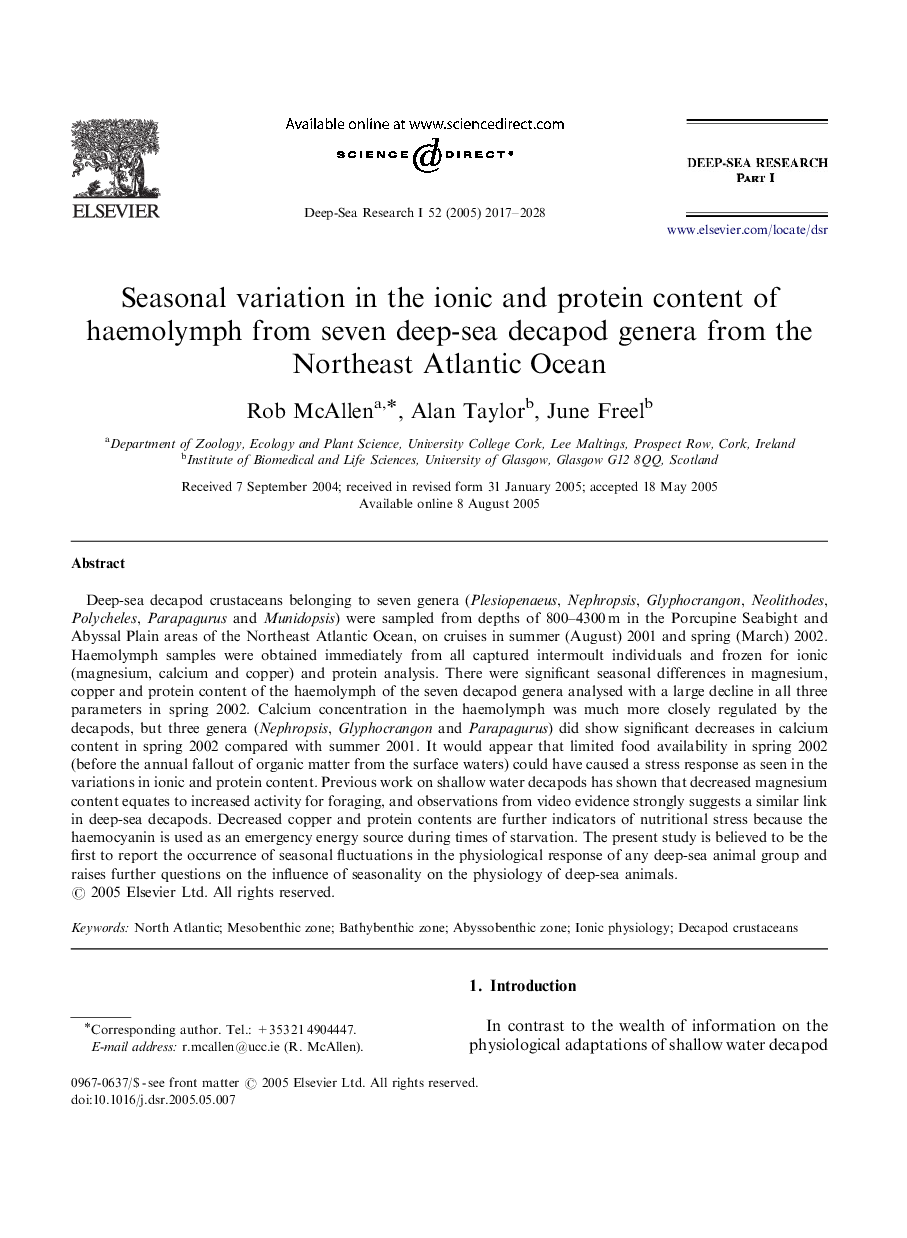| کد مقاله | کد نشریه | سال انتشار | مقاله انگلیسی | نسخه تمام متن |
|---|---|---|---|---|
| 4535426 | 1326106 | 2017 | 12 صفحه PDF | دانلود رایگان |
Deep-sea decapod crustaceans belonging to seven genera (Plesiopenaeus, Nephropsis, Glyphocrangon, Neolithodes, Polycheles, Parapagurus and Munidopsis) were sampled from depths of 800–4300 m in the Porcupine Seabight and Abyssal Plain areas of the Northeast Atlantic Ocean, on cruises in summer (August) 2001 and spring (March) 2002. Haemolymph samples were obtained immediately from all captured intermoult individuals and frozen for ionic (magnesium, calcium and copper) and protein analysis. There were significant seasonal differences in magnesium, copper and protein content of the haemolymph of the seven decapod genera analysed with a large decline in all three parameters in spring 2002. Calcium concentration in the haemolymph was much more closely regulated by the decapods, but three genera (Nephropsis, Glyphocrangon and Parapagurus) did show significant decreases in calcium content in spring 2002 compared with summer 2001. It would appear that limited food availability in spring 2002 (before the annual fallout of organic matter from the surface waters) could have caused a stress response as seen in the variations in ionic and protein content. Previous work on shallow water decapods has shown that decreased magnesium content equates to increased activity for foraging, and observations from video evidence strongly suggests a similar link in deep-sea decapods. Decreased copper and protein contents are further indicators of nutritional stress because the haemocyanin is used as an emergency energy source during times of starvation. The present study is believed to be the first to report the occurrence of seasonal fluctuations in the physiological response of any deep-sea animal group and raises further questions on the influence of seasonality on the physiology of deep-sea animals.
Journal: Deep Sea Research Part I: Oceanographic Research Papers - Volume 52, Issue 11, November 2005, Pages 2017–2028
